Compared to other complicated, fancy components in your vehicle, like the engine and the transmission, the tires are quite simple and boring; they are often overlooked and neglected by many car owners.
However, owning the right set of tires for your driving conditions and giving them proper maintenance are crucial to your safety on the road, as well as handling and maneuvering.
As the world of car tires is vast and diverse, the recommended approach is to shortlist the best tire brands, then narrow down to the tires with the right specifications for your needs.
To make your purchasing decisions as stress-free as possible, we have compiled a list of the top tire brands to buy from.
In addition to our handpicked best tire companies with the most reliable offerings, you will also learn how to pick the best tires for your money and your driving conditions…
The Best Tire Brands To Buy
Bridgestone (Japan)
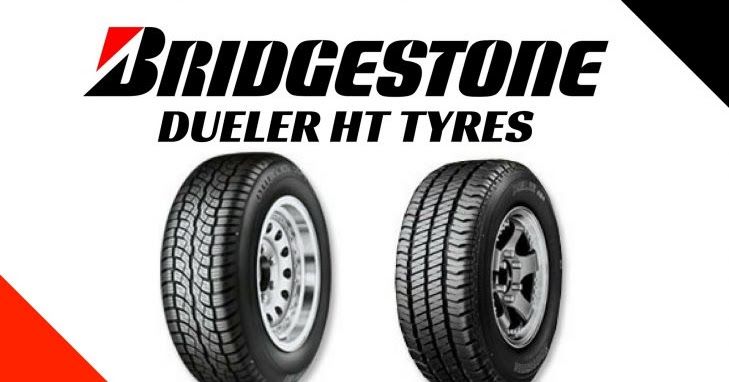
This behemoth Japanese multinational auto and truck parts manufacturer, Bridgestone Corporation, has been making a name for itself since 1931 in various arenas, including tires for passenger cars and trucks. While no single tire manufacturer can be said with confidence to be the absolute best tire brand, Bridgestone Corporation is without a doubt the largest tire manufacturer in the world.
Its purchase of Firestone Tire and Rubber Company in 1988, and various other acquisitions over the years like Tires Plus and Wheel Works in the US, have expanded its product portfolio and global distribution network.
Its broad product portfolio includes various brands, including the Bridgestone brand, with more than 100 different tire models for just about every driving application and condition, including all-season tires, winter tires, all-terrain tires, and mud-terrain tires.
Its Blizzak winter tire line, introduced in the 1990s and now offers nine different varieties, was a major reinvention of winter tires at the time and is known for offering superb performance on snowy, icy roads.
In addition to the Turanza and Ecopia tires for passenger vehicles, the Potenza line offers high-performance and ultra-high-performance tires.
In July 2018, Goodyear and Bridgestone Americas Inc. created the $600 million, stand-alone company based in Atlanta, TireHub L.L.C. The purpose is to provide U.S. tire dealers and retailers with a comprehensive range of passenger and light truck tires and provide a superior, fully integrated distribution, warehousing, sales, and delivery solution.
This cohesive joint operation has consolidated several distribution centers in certain markets, where both Goodyear’s company-owned wholesale distribution network and Bridgestone’s Tire Wholesale Warehouse are present. TireHub also opened a total of 68 new distribution centers.
Offerings – Car and truck tires: All-season tires, winter tires, all-terrain tires, mud terrain tires, touring tires, high-performance tires, ultra-high performance tires.
Why it’s one of the best tire brands:
- Product portfolio: A comprehensive portfolio of tires for every application, including passenger cars and light trucks
- Performance: Excellent wet and dry performance, superb winter performance
- Distribution: Comprehensive wholesale and retail distribution network, including third-party distributors. In the US, TireHub’s network can reach the vast majority of retail locations across the country on a daily basis.
Michelin (France)
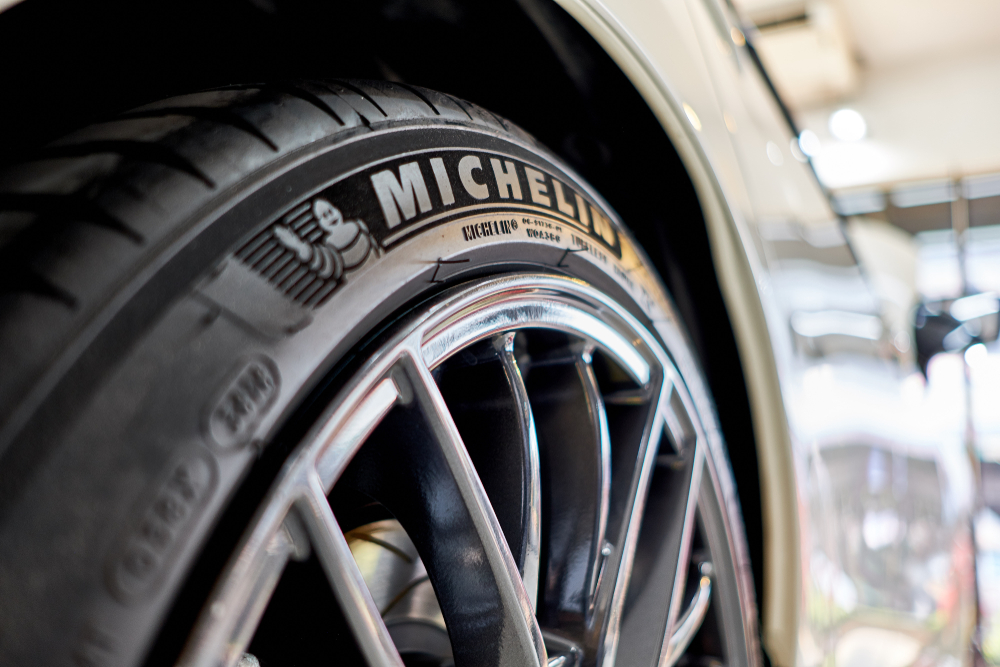
Having been in business since 1889, Michelin is a French multinational tire manufacturer and was once the world’s largest tire manufacturer before Bridgestone.
Now, although it comes after Bridgestone in size, Michelin is still the second-largest tire manufacturer, larger than major brands like Goodyear and Continental, as well as being recognized as one of the best tire brands on the planet. It owns 69 manufacturing facilities located in 18 countries.
Michelin produces a wide range of tires for different applications, including space shuttles and aircraft, heavy equipment, cars, motorcycles, and bicycles. In addition to the Michelin brand, it also owns the Kléber tires company, Uniroyal-Goodrich Tire Company, Bookatable, Camso, and SASCAR brands.
Regarding tires for automobiles, Michelin offers 53 different models, many of which won prestigious awards, such as the CrossClimate2, the Golden Wrench winner for Best All Season, and the Pilot Sport S4, the Golden Wrench Winner for Best Performance tire.
For car and truck tires, Michelin offers all-season as well as winter tires; it’s one of the best tire brands that offer more than one winter tire model for snowy climates.
It also offers tires for rough or muddy terrains, as well as performance tires with stellar appearances on the track.
Like Bridgestone, the only thing that some car owners might find less agreeable about Michelin tires is their price, but that’s a cheap price to pay for ride comfort, safe driving and longevity.
Offerings – Car and truck tires: All-season tires, winter tires, all-terrain tires, mud-terrain tires, touring tires, high-performance tires, ultra-high performance tires, best trucks tire for towing.
Why it’s one of the best tire brands:
- Product portfolio: A wide range of tire models for different applications
- Performance: High-quality standards across different offerings, and particularly praised for performance tires as well as all-season tires
- Distribution: Manufacturing plants across the globe, and together with it a comprehensive distribution network. Nationwide retail network in the US.
Goodyear (America)
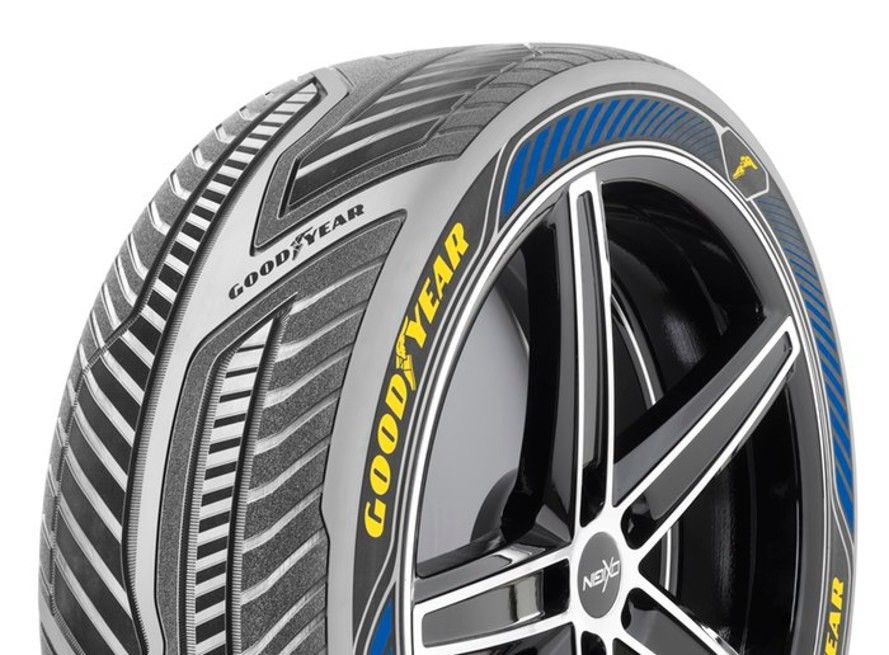
Founded in 1898, around the time of Bridgestone’s birth, American tire manufacturer Goodyear Tire & Rubber Company quickly earned a reputation in the arena for car tires.
It’s one of the top four tire makers in the world today in terms of size, along with Bridgestone, Michelin, and Continental, and definitely deserves one of the top spots in any reviews of the best tire brands of the 21st century.
Goodyear manufactures a wide range of tires for automobiles, race cars, light trucks, commercial trucks, motorcycles, bicycles, farm equipment, heavy earth-moving machinery, and airplanes.
It offers a huge portfolio of 85 different tire models for every driver and every need, from budget all-season tires like the Radial LS for commuter sedans to ultra-high performance tires like the Eagle F1 Supercar.
The largest product category is tires for trucks and SUVs, which account for about half the offerings.
For many decades, Goodyear has been synonymous with quality and longevity across different tire models. However, some customers report that certain models only provide fair wet performance, which could be better.
For the last few decades, Goodyear was active in business expansion. It was the first global tire maker to enter the lucrative Chinese market, with the construction of a manufacturing plant in Dalian in 1994.
In 2018, Goodyear and Bridgestone joined hands to create TireHub, a joint wholesale distribution network across the United States. In February 2021, Goodyear announced that it has plans to acquire Cooper Tire & Rubber Company, another one of the best tire brands that will also be covered in this list. The transaction is expected to be finalized in the second half of 2021.
Offerings – Car and truck tires: All-season tires, winter tires, all-terrain tires, mud-terrain tires, touring tires, high-performance tires, ultra-high performance tires.
Why it’s one of the best tire brands:
- Product portfolio: A wide range of tire models, especially tires for SUVs and trucks and winter tires
- Performance: High-quality standards across different offerings, and particularly praised for performance tires as well as all-season tires
- Distribution: Has standalone Goodyear tire retail shops. Nationwide retail network in the US.
Continental (Germany)
Continental, commonly known colloquially as Conti, is a German multinational automotive parts company that manufactures a diverse range of multinational automotive parts, including tires, brake systems, powertrain and chassis components, interior electronics, and other parts.
Founded in 1871 as a rubber manufacturer, it is now the world’s fourth-largest tire manufacturer and among the very best tire brands.
Continental AG is part of a giant conglomerate that makes all types of products for the automotive and transportation industries. Making tires is just one facet of the business.
Continental was the first to come up with various important inventions in the field of vehicle tires. In 1898, Continental further consolidated its position with the development and launch of its plain-tread tires, which was a major success. In 1904, Continental became the first manufacturer ever to make grooved tires.
Another notable invention in 1905 was a detachable wheel tire designed for touring vehicles. In the late 1920s, Continental merged with several big names in the German rubber industry to form the largest rubber company in the country.
In the US market, Continental offers a range of 59 different tire models. Continental is particularly known for excellent medium-duty truck and SUV tires and touring tires, as well as superb high-performance tires and ultra-high-performance tires. However, it doesn’t offer much when it comes to all-terrain and mud-terrain models.
Offerings – Car and truck tires: All-season tires, winter tires, touring tires, high-performance tires, ultra-high performance tires.
Why it’s one of the best tire brands:
- Product portfolio: Substantial range of performance-focus tires, but very limited all-terrain or mud-terrain offerings
- Performance: Particularly known for excellent winter tires, all-season tires, and touring tires.
- Research and development: Enhanced expertise thanks to consolidation with major rubber manufacturers in Germany. Have a track record of continuous research, invention, and product improvement.
Pirelli (Itali)
This Milan-based multinational tire manufacturer Pirelli also has a long history of nearly 150 years, being founded in 1872 in Italy and initially specializing in rubber and derivative processes.
Today, Pirelli is one of the best tire brands worldwide, especially in the categories of high-end truck and SUV tires as well as performance tires.
It has exclusively provided tires for major European racing series and events including the FIA Formula One and the Grand Am Rolex Sports Car Series.
Pirelli’s portfolio includes 63 tire models. The most notable and highly rated products are high-end tires for trucks and SUVs, with the Scorpion line being a representative, but what really made its name in the automotive parts industry is ultra-high-performance tires.
Pirelli produces performance tires for sport-luxury cars and exclusive performance cars. Its winter tires also receive raving reviews by drivers and experts alike, and its line of track tires also has earned a formidable reputation.
Being so performance-driven, you can expect that Pirelli tires are not cheap, but they are worthy investments.
Offerings – Car and truck tires: All-season tires, winter tires, all-terrain tires, touring tires, high-performance tires, ultra-high performance tires.
Why it’s one of the best tire brands:
- Product portfolio: Wide range of tires, an especially substantial range of performance-focus tires, but no dedicated mud-terrain tires
- Performance: Particularly known for excellent winter tires, high-end tires for trucks and SUVs, but above all, performance tires.
- Distribution: Comprehensive retail network
Yokohama (Japan)
Japanese tire manufacturer Yokohama has been making tires ever since 1917, but it only started to really make a name for itself in the West, particularly in the United States from the year 1969.
Since then, it has opened two manufacturing facilities in the US, and despite being behind in both age and scope compared to the big names we have discussed so far, Yokohama has become one of the best tire brands thanks to its excellent tires for a wide range of OEM applications.
Despite being quite late in the game, Yokohama offers a quite comprehensive product portfolio with 76 different models available in Western markets.
Some notable offerings include the Geolandar truck and SUV line, the Avid all-season/touring tires, and the ADVAN line of performance tires.
It also has several winter tires, all-terrain tires, and mud terrain offerings. The only flaw with Yokohama is less than ideal winter performance for some all-season models.
Offerings – Car and truck tires: All-season tires, winter tires, all-terrain tires, mud terrain tires, touring tires, high-performance tires, ultra-high performance tires.
Why it’s one of the best tire brands:
- Product portfolio: Wide range of tires, especially a substantial range of all-season/touring tires, as well as truck and SUV tires, including mud-terrain and all-terrain tires
- Performance: Outstanding high-performance lineup.
- Distribution: Being younger and smaller, it has a less comprehensive retailer network than other major manufacturers in this list.
Cooper (America)
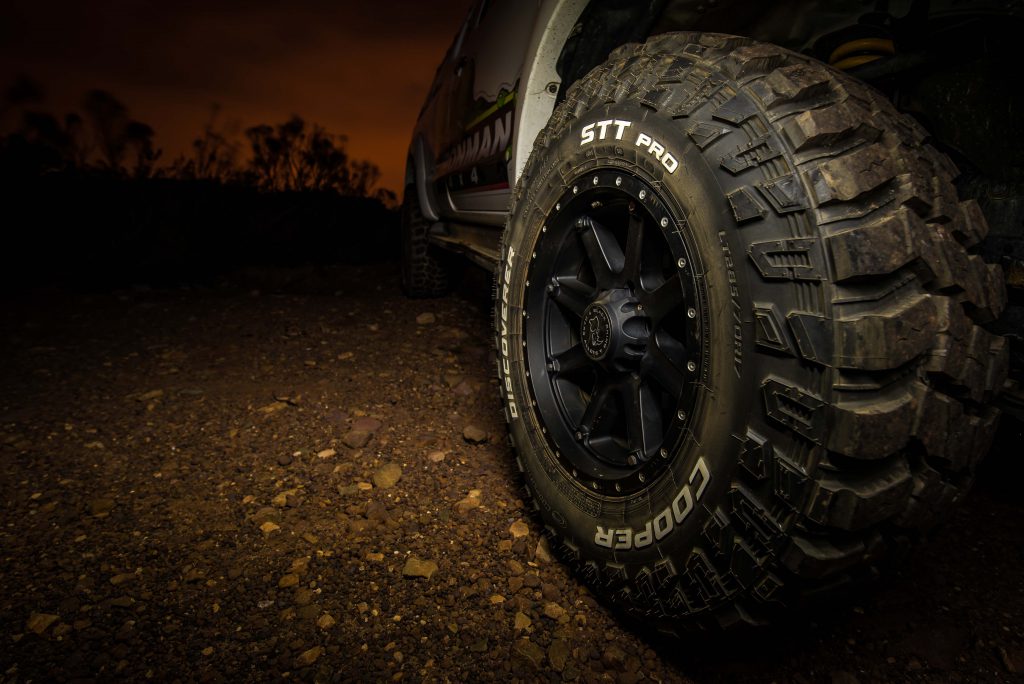
Cooper was born a bit later than the above brands. It was founded in the United States in 1914, and despite being younger than some other brands, it has a laser focus on automobile and truck replacement tires.
It has subsidiaries that specialize in medium trucks, motorcycles, and racing tires. It has had some dark days, but has bounced back and earned a reputation as one of the best tire brands today.
Cooper only offers 21 tire models, so it can’t compete with the largest manufacturers in terms of product breadth, but all of its offerings are highly rated and known for superb performance.
Its most notable lineups include the Discoverer line for truck and SUV tires, and the Cooper Cobra line for muscle cars, one of a very few with fat sidewalls in 14- and 15-inch diameters.
Offerings – Car and truck tires: All-season tires, winter tires, all-terrain tires, mud terrain tires, touring tires, high performance tires.
Why it’s one of the best tire brands:
- Product portfolio: It does offer tires for a wide range of driving needs. However, its product range is smaller, particularly the high performance category (it doesn’t have ultra-high-performance tires). It’s one of the very few brands that offers tires for vintage muscle cars
- Performance: Particularly known for excellent all-terrain tires and mud-terrain tires
BFGoodrich (France)
Founded in 1870, BFGoodrich is one of the oldest tire manufacturers. It’s been part of the Michelin family of brands since 1990, and still holds firmly to its legacy as one of the best tire brands globally, especially in the United States.
BFGoodrich is another brand with a deep focus and a narrow product portfolio of just 21 offerings. It’s best known for its All-Terrain T/A K02, Mud Terrain KM3 and the g-Force ultra-high performance tires.
Its Advantage T/A touring tires also received raving reviews as quality replacement tires for commuter sedans and sports carsBFGoodrich is also one of the very few makers of white-letter 14- and 15-inch tires for vintage muscle cars with the Radial T/A line.
Offerings – Car and truck tires: All-season tires, all-terrain tires, mud terrain tires, touring tires, high-performance tires, ultra-high performance tires.
Why it’s one of the best tire brands:
- Product portfolio: Small product range and no dedicated winter tires, but makes one of a very few tires for vintage muscle cars
- Performance: Excellent all-terrain tires, mud-terrain tires, touring tires, and ultra-high performance tires.
- Distribution: Limited retail network
General (America)
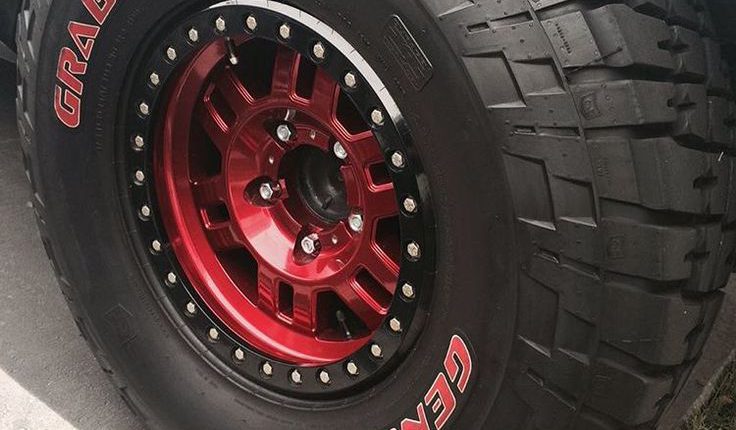
Founded in 1915, the American tire manufacturer General Tire was one of the many rubber manufacturers that were born and headquartered in Akron, Ohio, the industrial powerhouse of the time.
General Tire belongs to the giant Continental AG. What sets the brand apart from other major tire manufacturers is its more affordable price range. Allowing budget vehicle owners to get extra quality sets of tires for what they can afford.
General only offers a limited range of 19 tire models, the majority of which are truck and SUV tires, including all-season tires, winter tires, all-terrain tires, and mud-terrain tires.
The most popular lineups are probably the Grabber line, the Altimax winter line for passenger vehicles, and the Grabber Arctic winter line for trucks and SUVs.
Offerings – Car and truck tires: All-season tires, winter tires, all-terrain tires, mud terrain tires, touring tires, high-performance tires, ultra-high performance tires.
Why it’s one of the best tire brands:
- Product portfolio: Small range, especially limited performance range, but more offerings for trucks and SUVs
- Performance: Known for affordable but quality all-season tires, winter tires, all-terrain tires, and mud terrain tires
- Distribution: Limited retail network
Hankook (South Korea)
Hankook is the youngest of the best tire brands today, being founded in South Korea in 1941 as the Chosun Tire Company.
It was later rebranded in 1968 to become Hankook, which is the native word for “Korean”. The brand only began selling tires in Western markets and the United States in the 1990s.
Despite being pretty young with less experience, Hankook has come a long way to become a name in the tire industry that you cannot ignore. For its short history, it has quite an impressive product breadth of 42 different models.
Its most popular offerings are the Optimo and Kinergy all-season and touring tires, the Ventus high-performance line, and the Dynapro all-terrain and mud-terrain line, which were launched more recently. It doesn’t have a dedicated line of winter tires though.
Offerings – Car and truck tires: All-season tires, all-terrain tires, mud terrain tires, touring tires, high-performance tires, ultra-high performance tires.
Why it’s one of the best tire brands:
- Portfolio: Substantial line of all-season and touring tires, but limited all-terrain and mud-terrain tires, and no winter tire
- Performance: Excellent performance tires
The Ultimate Guide To Get The Best Car Tires
Having good driving habits and maintaining your car tires regularly can help increase the lifespan of your tires, but eventually, your car will require a new set of replacement tires.
Now that you know who makes the best tires, you need to learn how to get the best car tires for your beloved vehicle.
When it comes to buying new tires, there are many sensible concerns, including all-season or winter/snow tires, what the numbers on the tire’s sidewall mean, how long tires last, and, of course, how often to change tires.
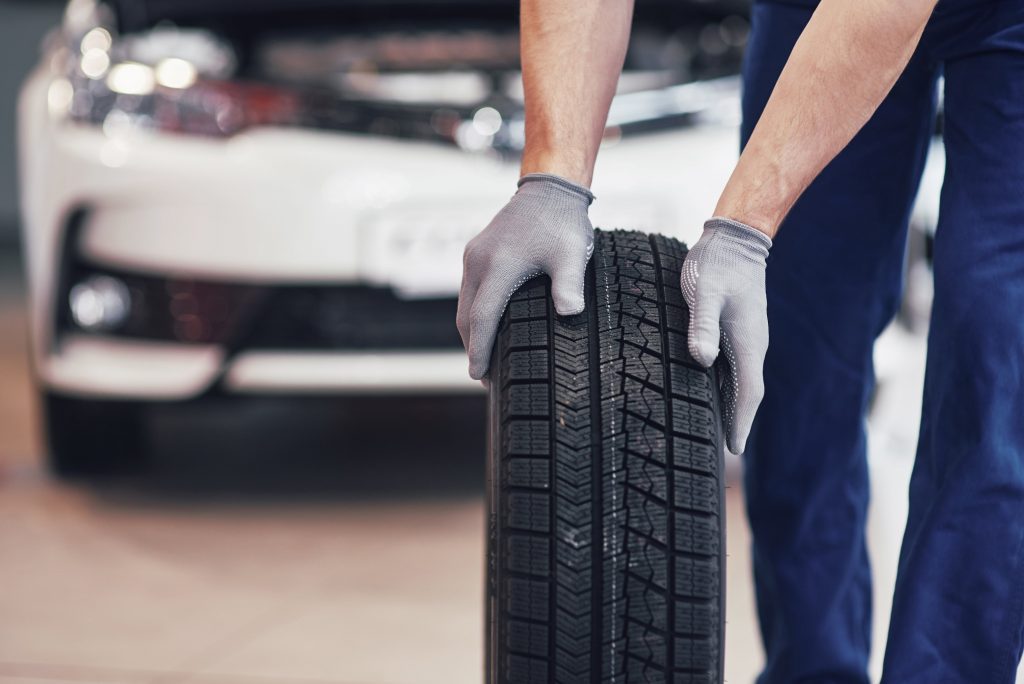
When Do You Need To Buy New Tires?
In general, you can expect your tires to last you at least 50,000 miles or an equivalent of something around 3-4 years of driving, that is in normal driving conditions.
However, countless car owners have complained that their tires or replacement tires only last them much less than the 50,000-mile mark, sometimes as little as 20,000 to 30,000 miles.
As you will see in more detail further below, bad driving habits, driving on rough terrain, and excessive exposure to direct sunlight are just some of the factors that can shorten your rubber tires’ lifespan.
In short, when it comes to the longevity of car tires, there are no promises. While there is no rule of thumb for when you should replace a tire, many car and tire manufacturers suggest replacing them before they become 6 years old, counting from the date of manufacturing which can be found on each tire.
Of course, the more you drive, the faster the tires age. But what you must know is that even if you rarely drive at all and the car or the tires are just sitting there in the garage, they still deteriorate due to the nature of the materials used.
Tires are made of a combination of natural rubber and synthetic rubber, plus a handful of other chemical compounds.
Knowing How Old Your Tires Are
You can find out the age of a tire or the year of manufacturing of any tire by looking for the Tire Identification Number (TIN) on its sidewall. You will find a longer group of letters and numbers, and the TIN will be the last group of digits following “DOT”.
After “DOT”, there are two groups of letters and at the end a group of numbers, with each group of digits separated by a space.
The group of numbers at the end can either consist of 3 or 4 numbers. 4 generally means the tire was manufactured after the year 2000 and is newer, so this is what you should look for when buying replacement tires.
An example of the DOT code: DOT Y9LH FU1P 2620. The last group of digits for this tire is 2620, meaning it was manufactured in the 26th week of the year 2020, so this tire is pretty fresh out of the factory.
Another example of the DOT code is: DOT G13P F0M0 207. The last group only has 3 digits, which means the tire was manufactured in the year 1997, specifically in the 13th week.
Signs of Old, Worn Tires
When you take your vehicle to the mechanic for regular servicing, have the tires inspected and replaced if needed.
There are a few signs that you can look for as well to determine whether your tires’ integrity has been jeopardized:
Vibration
If you detect your car vibrating significantly when driving, this could demonstrate issues now and possible dangers down the road.
Bulges and blisters
A noteworthy blister or bulge is a warning sign of a weak outer surface.
Sidewall cracks
Check whether there are deformations or cuts in the sidewalls or not. If you detect any grooves, there is likely a leak on your tire.
Tread wear
The tire’s tread is the ribs on the tire’s surface that create indentation or depth, and the purpose is to provide traction, especially on wet, snowy, or bumpy roads.
In general, your four tires should have even wear on them to allow for better traction and vehicle handling. You’d need to rotate your tires periodically to ensure this.
And of course, excessive tread wear means your tires are losing traction and need to be replaced.
One warning: do not rely solely on the popular “penny test” to determine whether a tire is old enough to be replaced.
The penny test is used widely and you will see many sources talking about it on the Internet. However, countless mechanics and auto experts have asserted that using the penny test alone cannot tell you whether a tire is still good or should be replaced.
The penny test involves putting a penny into the tire’s tread with Lincoln’s head upside down and facing you.
If you cannot see the top of Lincoln’s head, your tire has sufficient tread depth. If you can see the top of his head, your tire must be replaced.
The reason you should not rely on the penny test alone is that while it can test whether the tread on a tire is deep enough to provide traction, remember that even if you don’t drive much, a rubber tire will still deteriorate.
So a tire might have sufficient tread depth, but has been sitting around for too long and thus must be replaced.
Buying Tips
Don’t buy used tires
You might buy a used car, but never buy used tires. As above, a tire should be replaced after 6 years old from its manufacturing date. When you buy used tires, it’s most likely that the tire is close to its retirement age already.
Plus, if you buy used tires, you won’t know whether the previous owners took care of them properly with proper driving, tire inflation, and rotation. Visual inspection is by far not enough to determine the state of a tire.
We know that a set of tires is not cheap, but buying used is not worth it, so for your peace of mind and for your safety, always buy brand new tires.
Brand-new’ tires: Choose recently manufactured tires
Having said that, when you buy brand new tires, make sure you buy those with a recent manufacturing date as well, by looking at the TIN on a tire’s sidewall.
Remember that a new tire does not mean it has zero years of age and has not deteriorated at all.
Choose the right tires: Tires specifications
If you have special driving conditions such as long snowy winters or live in extreme weather conditions, you will need to pay more attention to the specifications of a tire to make sure its performance will meet your particular demand.
Plus, it’s always a good idea to gather reviews and ratings on your shortlisted options.
That said, for most cars with normal driving conditions, good driving practices, and proper car maintenance, a balanced combination of a high wet traction rating, ride comfort, treadwear rating (plus tread-life warranty), and low noise levels.
Also, car tires should be treated as an investment, so stay away from dirt-cheap ones and you’re good to go.
Tire terms you need to know:
Tire specifications: including speed rating, tread wear rating, wet traction rating, construction, and size.
Speed rating
Speed rating indicates the maximum speed a tire can carry a load safely under specified service conditions over time.
The speed rating system used today was developed from the increasing need for safer tire performance at standardized speeds.
A tire’s certified speed rating is denoted by a letter from A to Z (A is lowest), ranging from 5 km/h (3 mph) to above 300 km/h (186 mph).
The higher the speed rating of a tire, the better its control and handling. On the other hand, a higher speed rating might mean a shorter tread life.
For a good balance, consult your car owner’s manual for the proper speed-rated tire for your vehicle.
Tread wear rating
The tread wear rating is listed as a number printed on a tire’s sidewall after the word “treadwear”. A higher rating means that the tread on the tire will likely last you more miles on the road.
When shopping for tires, the best deals often come with a tread-life warranty, also called the mileage warranty, which many tire manufacturers offer on top of the regular defect warranty.
If your tire tread wears out before you hit the number of mileage provided under the warranty, you can get a dollar-amount credit for the tire’s unused miles.
So that when you buy a new tire from the same manufacturer, this credit will be subtracted from the new tire’s price.
Wet traction rating
The better the wet traction rating, the better grip a set of tires have and thus the shorter the stopping distance on wet pavement. If you live in humid, rainy climates, you should get tires with a good wet traction rating.
The ratings from highest to lowest are AA, A, B, and C. If a tire is designed for extra traction in mud and snow, you’ll also see the designation “M+S.”
In addition, if you want to dig deeper into the quality of a set of tires, there are other factors to consider while doing your homework.
Designation
Indicates a tire’s specific benefits. For instance, “M +S” shows that the tire can work well on muddy and snowy roads, based on the Rubber Manufacturers Association standards.
Uniform Tire Quality Grading (UTQG): The testing method used to classify a tire’s traction, treadwear, and temperature.
Department of Transportation Safety Code: This code proves that the manufacturer has met the tire safety standards set by the US Department of Transportation.
How To Read A Tire’s Sidewall
| Tire specifications | Explanation |
| Tire type | P = “passenger car”; T = “temporary”; ST = “special trailer”; LT= “light truck”; |
| Tire Width | – Indicates a distance from the sidewall edge to the sidewall edge. – The higher the number, the wider the tire. |
| Aspect Ratio | – Tire’s section height compared to its section width. – Lower numbers mean a short sidewall with enhanced handling and steering. |
| Internal Construction | R = Radial construction |
| Rim Diameter | Wheel diameter, in inches, for which the tire was sized. |
| Load Index | – Measurement of how much weight each tire is designed to support. – The larger the number, the higher the load capacity. |
| Speed Rating | Speed the tire is made for running for long periods. H = 130 mph (Y) = Over 186 mph Y = 186 mph W = 168 mph Z = Over 149 mph V = 149 mph S = 124 mph |
Enhanced materials
The aging of car tires over the years is inevitable, but the industry has come up with enhanced materials to slow down the aging process to some extent. To do this, antiozonant chemical compounds can be incorporated into the rubber.
Similar to the effect of oxygen on materials, the tiny amount of ozone in the air can cause cracking on plastic and rubber. These antiozonants are used as additives for plastic and rubber to prevent such cracking, thus the name (“anti” and “ozonant”).
Thanks to better resistance to ozone cracking, antiozonant tires are often rated for higher mileage.
If you want your investment to last you longer than average on the road, antiozonant is a feature you should look for if you’re looking for.
Different tire types
| Type of tire | Description | Other information | Best for |
| All-season car tires | – Affordable price. – Comfortable ride, long treadwear – Lack of precise grip and handling | – Speed rating: None, S (112 mph), T (118 mph)– – Typical wheel size: 14 to 18 inches – Treadwear warranty: None or 40,000 to 100,000 miles | Light-duty SUVs and pickups |
| All-season truck tires | Perform well in most conditions | – Speed ratings: S (112 mph), T (118 mph), H (130 mph) – Typical wheel size: 15 to 22 inches – Treadwear warranty: None or 40,000 to 80,000 miles | Heavy-duty SUVs or Pickups |
| All-Terrain Truck Tires | – Light off-road use – Extra traction on snowy and unpaved roads | – Speed ratings: S (112 mph) for many – Typical wheel size: 15 to 20 inches – Treadwear warranty: None or 50,000 to 60,000 miles | Heavy-duty trucks |
| All-season SUV Tires | – Adequate off-roading – Light-duty towing capabilities and performance | – Speed ratings: T (118 mph), H (130 mph) – Typical wheel size: 16 to 20 inches – Treadwear warranty: 60,000 to 90,000 miles | Modern SUVs |
| Performance All-Season Car Tires | – Higher speed rating – Year-round grip tuned for enthusiastic driving – Better braking and handling | – Speed ratings: H (130 mph), V (149 mph) – Typical wheel size: 15 to 20 inches – Treadwear warranty: None or 40,000 to 80,000 miles | – Cars & minivans – Newer cars |
| Ultra-High-Performance Tires | – Responsive steering – Good handling – Summer UHP tires are not suitable for cold weather | – Speed ratings: ZR (149-plus mph), W (168 mph), Y (186 mph) – Typical wheel size: 17 to 22 inches – Treadwear warranty: None or 30,000 to 60,000 miles | – Cars & minivans, – Sport cars – Upscale sedans |
| Winter/Snow Tires | – Excellent grip to stop, go, and corner on ice or snow – Rubber withstands freezing temperatures – Need more time to stop | – Speed ratings: Q (99 mph) and higher – Typical wheel size: 14 to 22 inches – Treadwear warranty: None for most | Cars in areas that experience wintry weather |
| Performance Winter/Snow Tires | – Enhanced cold-weather grip – Seasonal tires for cars using summer or UHP all-season tires | – Speed ratings: H (130 mph) and higher – Typical wheel size: 17 to 20 inches – Treadwear warranty: None | Cars run in areas that receive an increased amount of ice and snow |
| Truck Winter/Snow Tires | – Optimal grip on icy or snowy roads. | – Speed ratings: S (112 mph) for many – Typical wheel size: 15 to 20 inches – Treadwear warranty: Typically none | SUVs, pickups and Trucks |
Tire Maintenance
No matter how expensive and highly rated your tires are, you need to check them regularly, give them proper maintenance and practice good driving habits.
If you’re a reckless driver, don’t expect your tires to last 50,000 miles. In addition, potholes, bumpy roads, extreme heat, and underinflation can further shorten their lifespan.
To extend the lifespan of your car, here are some things you need to do:
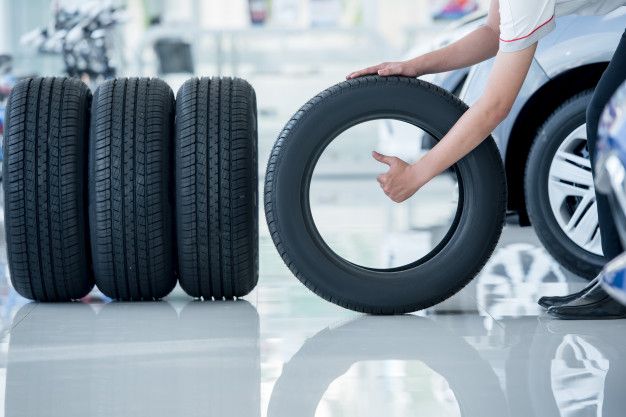
When you buy used tires, it’s most likely that the tire is close to its retirement age already (Photo: pinterest.com)
Minimize exposure to UV and heat
According to the National Highway Traffic Safety Administration (NHTSA), tires deteriorate faster in extreme heat and when frequently exposed to direct sunlight, like every other material on earth.
Direct exposure to UV breaks down the oils and chemicals in the tire that keep the rubber flexible and durable, thus making the tire deteriorate faster.
Note that if you have mounted your spare tire on the back of your car, it will still be exposed to heat, light, and air, so it will still age unless you keep it secure in a cover.
Hard-sided covers provide better protection than soft covers, but of course, they cost a lot more, with the best ones costing up to $500.
Pressure monitoring
Even inflating your tires can affect tire wear. You should check the air pressure every month when the tires are cold.
The proper air pressure level for your tires is provided by your car manufacturer on the door jamb or the fuel-filler door or inside the glove compartment.
Do not use the pressure printed on the tire’s sidewall as that is the maximum pressure the tire can withstand. It’s recommended to use a good quality tire pressure monitoring system for real time reports on your tire pressure.
An underinflated tire will be in contact with the road more, which means more tread wear. But overinflating your tires can also be problematic as well.
Tire inflation as specified by the manufacturer is ideal to ensure even and minimal tire wear as well as proper handling of your vehicle. And if your tire is punctured, make sure you have it properly repaired at once.
Do not overload your vehicle
If your vehicle carries more load than its maximum capacity, your tires will be worn out faster. Always keep the load within the limit printed on the door jamb placard of your vehicle.
Regular inspection
During your regular vehicle inspection, if you detect any bulges, cuts, or cracks in the sidewall or tread, you will need to replace these tires by new ones as soon as possible.
Inspect for uneven treadwear, which typically indicates worn suspension components or poor wheel alignment, and have both inspected by a mechanic.
Avoid aggressive driving habits
Certain driving habits make your tires wear out faster, including hitting the curb, turning the steering wheel when your car is not moving at all, abrupt braking, or driving on sharp pebbly roads.
Alignment and tire rotation
Additionally, before mounting a new tire, you also need to check your car’s alignment and suspension to stop them from wearing prematurely as well as ensuring even wear. Another important tire maintenance job is tire rotation.
Periodically rotating your wheels will even out the tread wear on all four wheels, thus extending their lifespan a little longer as well as allowing for better handling.
Professionals offer varying schedules for tire rotation, and some tire manufacturers recommend rotation every 10,000 kilometers or so, but the most common interval is at least twice a year. Regardless, always consult your owner’s manual.
Depending on whether your car is front-, rear-, or all-wheel drive, the tread wear rate and pattern on each tire will be different.
This is because each system sends power to the tires in different ways. And this means that each system needs a different tire rotation pattern.
As long as your vehicle is fitted with equal-size tires front and rear, you can use the three following tire-rotation patterns which should cover most of today’s AWD, FWD, and RWD vehicles, according to the Tire Industry Association.
That said, before trying to rotate your tires, check your manual to see if your tires are unidirectional, in which case they must be rotated in only one direction to function properly.
Below are the three tire rotation patterns for different transmission layouts:
AWD
AWD is a full-time system that is “on” all the time and it either mechanically or electronically varies the amount of power sent to each wheel for optimal balance and drivability.
While AWD vehicles have tires that wear more evenly than other types of drivetrains, this doesn’t mean you’re immune to uneven wear and can skip tire rotation.
For AWD vehicles, the optimal pattern is crisscrossing: move the right front to the left rear, the left front to the right rear, the left rear to the right front, and the right rear to the left front.
Another way to remember this is what is front will be rear, what is right will be left, and vice versa.
FWD
In front-wheel drive, the front wheels have to work much harder than the rear wheels: steering, braking, and withstanding the weight of the engine and front axle.
For FWD, swap the front tires straight to the right rear position on the same side, that is right front to right rear and left front to left rear.
Then, crisscross for the rear tires: move the right rear tire to the left front and the left rear tire to the right front.
RWD
Rear-wheel drive is front-wheel drive in reverse. That is, the rear wheels provide force to move the car, while the front wheels decide its direction. For RWD vehicles, the rotation pattern is also like that of FWD but in reverse.
Move the rear tires straight to the front, that is left rear to the left front and right rear to the right front.
Then move each front tire to the opposite rear corner, that is right front to the left rear and left front to the right rear.
FAQs About Car Tires
I’m getting only two new tires. Do they go on the front or back?
If you’re replacing only two tires on your vehicle, the rule of thumb is to always fit the new tires on the rear.
Is it easy to see when the tire pressure is low?
No, you can’t determine a tire’s pressure level just with a visual inspection. Tires can be under 50% inflated but not at all noticeable to the eyes.
Now you know why professionals always insist that you use a tire pressure gauge to accurately check your tire pressure on a monthly basis.
To get the most accurate reading, try to do so first thing in the morning, before you take your vehicle out for a drive.
Can I use a set of different tires for my car?
Auto experts recommend we should use a set of the same tires with the same size, age, and tread pattern to get the best performance.
If you use a set of different tires, it will lead to stability and handling issues.
However, there are some cars using different size tires in their front and rear wheels, so be sure to check your owner’s manual.
What are the best all-weather tires to buy?
The top 8 best all-weather tires to buy are:
– Bridgestone Dueler H/P Sport AS All-Season Radial Tire
– Pirelli P ZERO High-Performance Tire
– Yokohama AVID Ascend Radial Tire
– Michelin Defender LTX M/S
– Pirelli P Zero Nero
– Hankook Ventus ST RH06
– Michelin Defender
– Michelin Pilot Sports A/S 3+v.
What are the best all season tires for snow?
Our list of best all-season tires for snow includes:
– Bridgestone DriveGuard
– Goodyear Ultra Grip Winter Tire
– Continental Extreme Contact
– Michelin Latitude Tour
– Yokohama GEOLANDAR M/T G003
– BFGoodrich g-Force COMP-2 A/
– Antares COMFORT A5
– Starfire WR
What happens when a car tire gets old?
When a tire gets old, the tread wears out and will be too thin to provide any traction, which is dangerous, especially in rainy or icy weather.
Worse, there have been accidents caused by tire tread suddenly separating from the tires while driving and rendering the vehicle out of control.
Plus, due to the nature of a car tire’s material, the rubber compound will deteriorate, whether or not you drive often or just let your vehicle or the tire sit around in the garage.
Nothing can reverse the natural effect of time on rubber tires.
Tiny cracks will form over time on the tire’s surface as well as the inside, jeopardizing its integrity and performance.
Now you know our top 10 best tire brands in th market nowadays for you reference!
Hope you enjoy and find this piece of information helpful at some extent. For more insightful Car maintenance tips, follow articles like this on Car From Japan today!

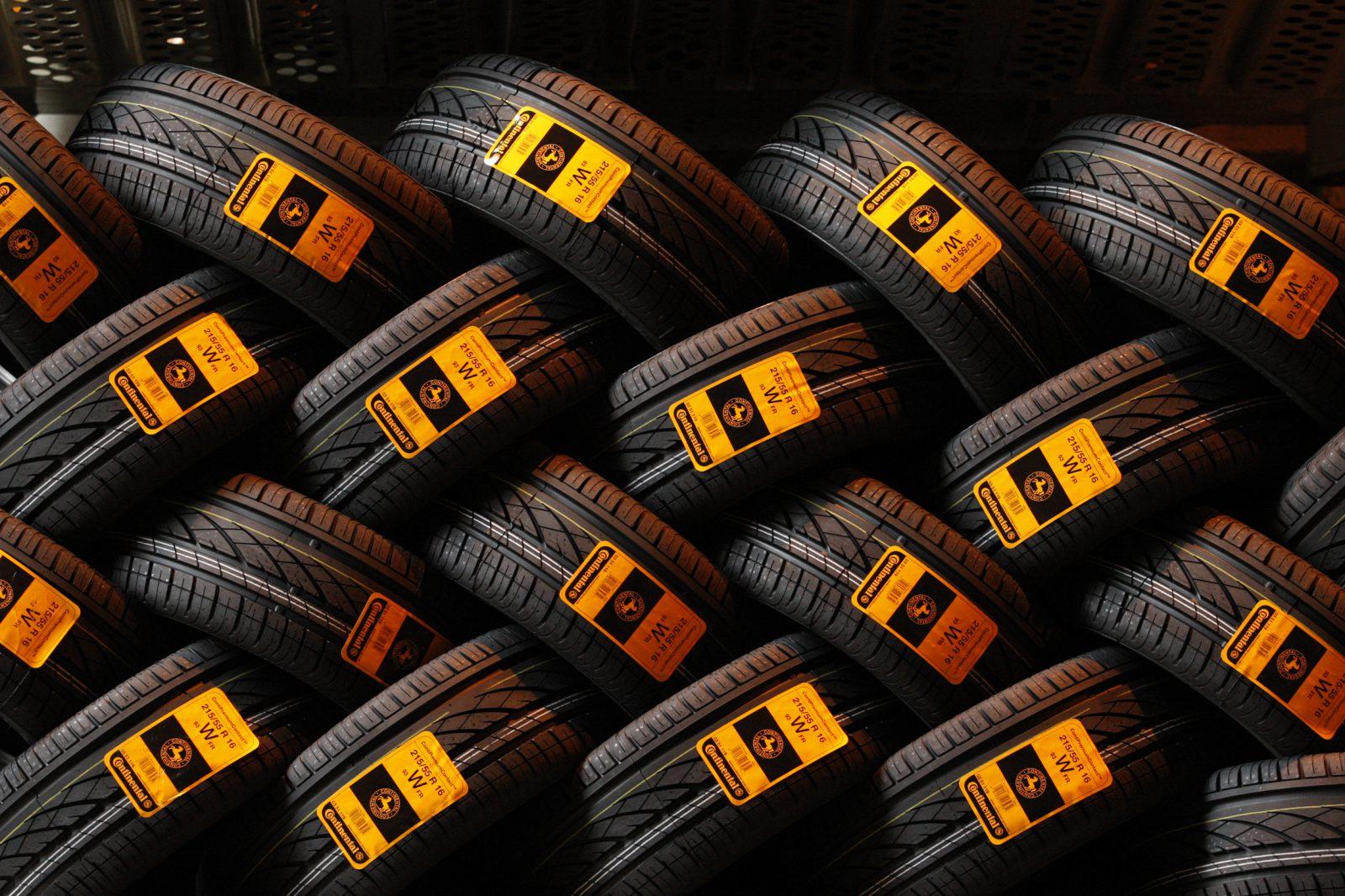


Which is best tyre for Indian road conditions
I don’t see the westlake tyres
Westlake is also pretty good. I have had one for three years and it is still very new.
Hi, Manish Agrawal.
There are so many tyre company in India. It’s difficult to say which is best tyre for India. Because it fully depend on the road and their services. Actually, for which road you want to drive your car and how much your tyre lasting. Any ways here a mention some brand to select best tire for india. Before that, read this article carefully to know the quality of the best tire.
Bridgestone : If you don’t mind spending a little extra for a tyre then you must go for Bridgestone.
Apollo 4g : Among all the Indian brands apollo (4g) is the best in terms of service and they last longer than the others.
Goodyear : They offer a worry free service on their car radials and each model has a different purpose.
Michelin: They’re too expensive for the service they provide and the tyres are not economical because of their heavy weight. I would not suggest you it for this heavy weight.
For may opinion apollo is the best tire for India. Now it’s your choose to use, which is best tire for your car.
For those who are interested, the EU rates tyres and makes the manufacturers rate and publish the tyres noise, fuel efficiency and stopping distance in the wet. They do not rate wear characteristics.
Not Goodyear
Philipp, I appreciate you taking the time to write this article. There is a lot of quick, valuable information regarding tires that helped me understand the tire industry as well as evaluating the side of a tire for it’s structure, dimensions and other factors. Perhaps you could take the time to review some of the other brands of tires that are outside of your top ten. I am currently in the market for tires and was wanting to know about some brands not listed in your top ten. Very good article. Thanks.
why aren’t General tires mentioned?
There has been an increase in Chinese Tyres in Africa.The names are too many to mention.Any Brand that can be rated the best?
If lm correct General is a cheaper version of Continental.
lol general is like piece of shit. Continental is father of all tyres.
No.1 comment regarding Michelin tires describes them as “fuel-free” . Can someone elaborate ?
Had Perellis on my Benz S430 because they came highly recommended. I know the car is heavy, but 20,000 miles? Had them rotated regularly too. Replaced them with Continentals and after 30K they’re done too. Going back to General, thank you.
Good day Sir/Madam,
we are interested in your business, please can we get more information about your business through our mailing address and you too. Pls we need your contact for further information.
thanks
DICKSON
Hello Philipp,
Amazing article. However can you please write an article when someone must change his tire ? Waiting to get an informative article with picture.